Ireland will be heading to the polls on Friday, October 24, to cast their vote for the next President.
The election sees the conclusion of President Michael D Higgins' second consecutive seven-year term in the Aras.
In Ireland, a President can only serve two terms.
Ireland's next President will assume the duties of representing the people of Ireland; appointing Members of Government, judges, and other officials; summoning and dissolving the Dáil; refusing to dissolve the Dáil; signing legislation into law; and acting as Supreme Commander of the Defence Forces.
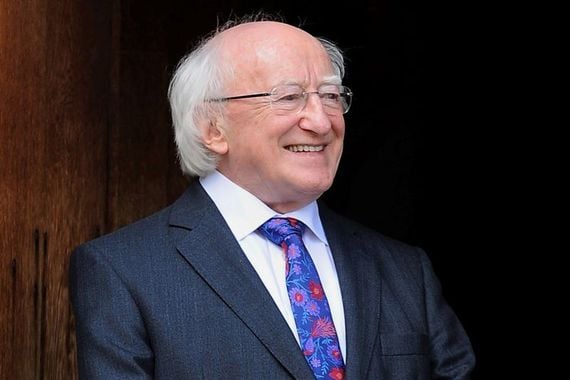
Ireland's outgoing President Michael D. Higgins. (Getty Images)
Who is on the ballot for Ireland's Presidential election?
There are three candidates on the ballot for Ireland's Presidential election, though one of the three has dropped out of the race.
TD Catherine Connolly is running as an Independent. She has the backing of Sinn Féin, Social Democrats, People Before Profit, the Labour Party, the Green Party, and several other Independents. She has served as a TD for Galway West since 2016.

Independent candidate Catherine Connolly. (RollingNews.ie)
Former TD Heather Humphreys is the Fine Gael candidate. Humphreys was a Fine Gael TD for Cavan-Monaghan from 2011 to 2024 and was the Deputy Leader of Fine Gael from April to October last year.
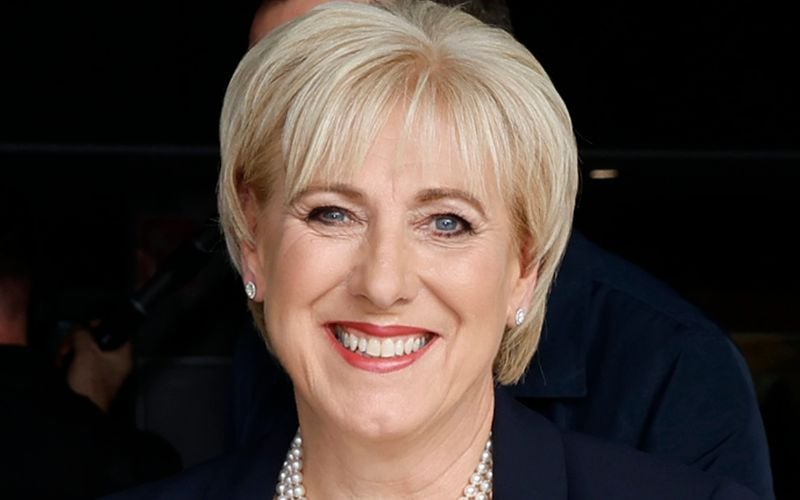
Fine Gael candidate Heather Humphreys. (RollingNews.ie)
Jim Gavin, who was running as Fianna Fáil's nominee, announced on October 5 that he was withdrawing from the race. However, a candidate can only withdraw before the ruling on the nominations by the Presidential Returning Officer has taken place, which this year happened on September 24.
As such, Gavin's name will still be on the ballot votes for him will still be counted.
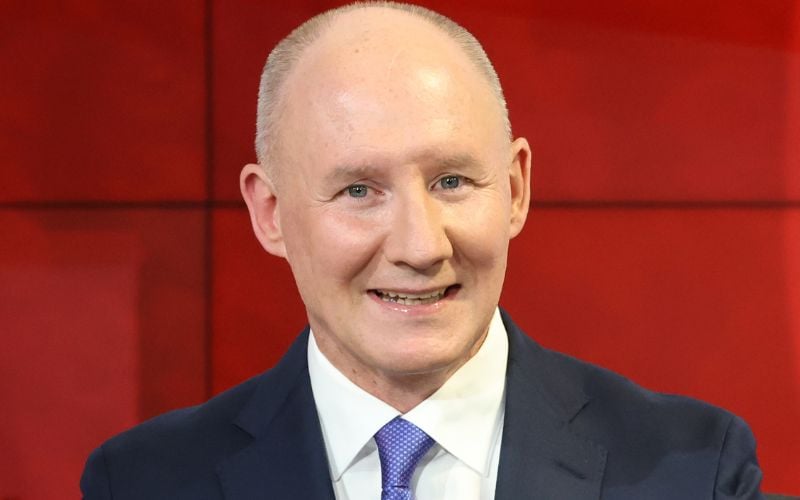
Jim Gavin. (RollingNews.ie)
When is Ireland's Presidential election?
As per Bunreacht na hÉireann (Ireland's Constitution), Ireland's Presidential election must take place by the date on which the current President’s term of office expires. This election may not take place more than 60 days before the end of the current term. The election must also take place within 60 days of resignation, death, or removal of the current president.
President Higgins was inaugurated for his second term on November 11, 2018. This means that the next Presidential election is scheduled to take place on or up to 60 days before November 10, 2025.
Polls open at 7 am and close at 10 pm on Friday, October 24, for the 2025 Irish Presidential election.
Read more
Who can vote in Ireland's Presidential election?
Voters must be Irish citizens, aged 18 or over, ordinarily resident in Ireland, and registered to vote. Voters can check their details on CheckTheRegister.ie.
The deadline to register to vote in the 2025 Irish Presidential election was October 7.
Eligible voters will receive a polling information card to their registered home address before polling day. Voters do not need to have their polling information card in order to vote, but it can be helpful to have.
Votes must be cast in person at a specified polling location, unless a voter has applied for a postal vote or a special vote.
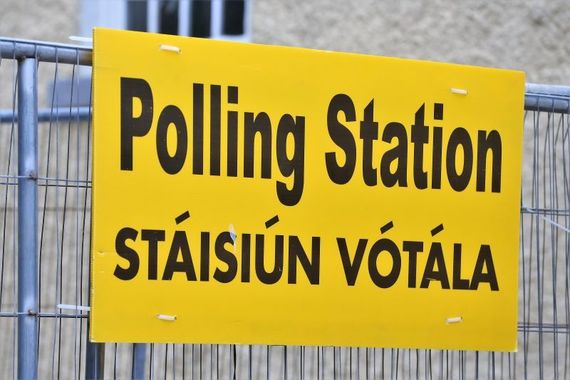
A polling station in Ireland in 2019. (RollingNews.ie)
How to vote in Ireland's Presidential election
Voters will be asked for their name and address when they arrive at their designated polling station on polling day. They may also be asked for identification.
If the polling staff are satisfied with the voter's identity and the voter's name is on the Register of Electors, the Presiding Officer will stamp the necessary ballot paper and give it to the voter. Ballot papers that are not stamped will not be valid.
The voter can then take their ballot papers into the private voting compartment.
Filling out the ballot paper for Ireland's Presidential election
Ireland uses proportional representation (PR), with each voter having a single transferable vote (STV).
The ballot paper will also show a list of names in alphabetical order and images of each candidate. There will be a box to the right of each candidate's name where voters can mark their preference for each candidate.
Voters can write a '1' in the box beside their first choice candidate and, if they wish, a '2' in the box beside their second choice candidate, a ‘3’ in the box beside their third choice candidate, and so on.
By marking a ‘1’ beside a candidate, a voter is saying, ‘I wish to vote for this candidate.'
By marking a ‘2’ beside a candidate, a voter is saying, ‘If my first choice candidate does not need my vote because they have already been elected or excluded from the count, I want my vote to go to this second candidate.’
By marking a ‘3’ beside a candidate, a voter is saying, ‘If my first and second choice candidates do not need my vote, I want my vote to go to this third candidate.'
Under this system, voters can choose different candidates and mark them in order of their preference.
A voter does not need to rank every candidate.
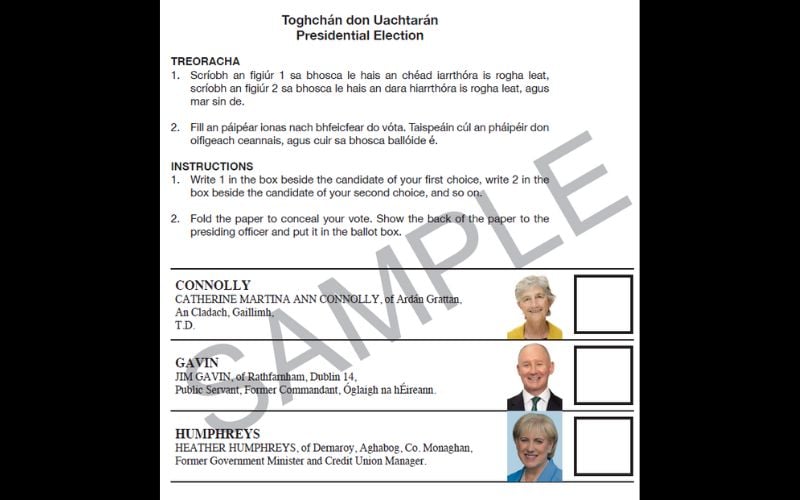
A sample ballot for Ireland's 2025 Presidential election. (An Coimisiún Toghcháin)
How will Ireland's Presidential election votes be counted?
The count for Ireland's Presidential election will begin at 9 am on Saturday, October 25, the day after polling, in line with rules set out in the Presidential Elections Act, 1993.
Each Returning Officer (RO) will open the ballot boxes for their constituency in their count centre.
The number of first preference votes for each candidate will be counted. After this first count takes place, the candidate with the lowest number of first preferences will be excluded, if necessary, and the next preferences of those ballot papers will be distributed among the remaining candidates.
The ROs send results of the counts to the Presidential Returning Officer (PRO) in Dublin Castle, using a standardised format that includes total poll, spoilt votes, total valid poll, and first preference count. The results are checked and verified by the PRO and his team in Dublin Castle.
The candidate listed on the ballot paper who secures the most votes in the election will be declared by the PRO to have been elected and will become the President-Elect of Ireland.
In line with Article 12 of the Constitution, the President-elect enters upon the office of President by taking the oath set out in the Constitution. This happens on the day after Michael D. Higgins’ term as President concludes.
An Coimisiún Toghcháin has shared this video to explain how the President of Ireland is elected:
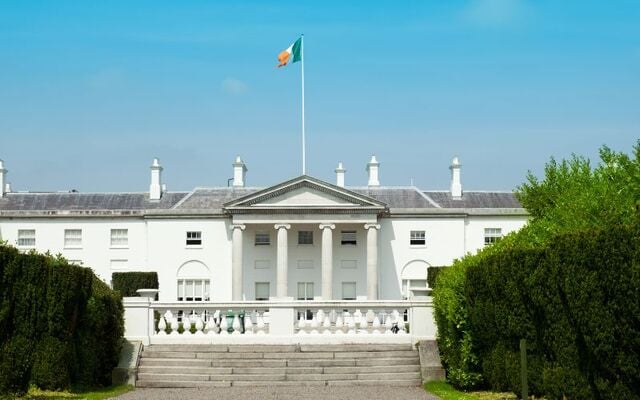



Comments